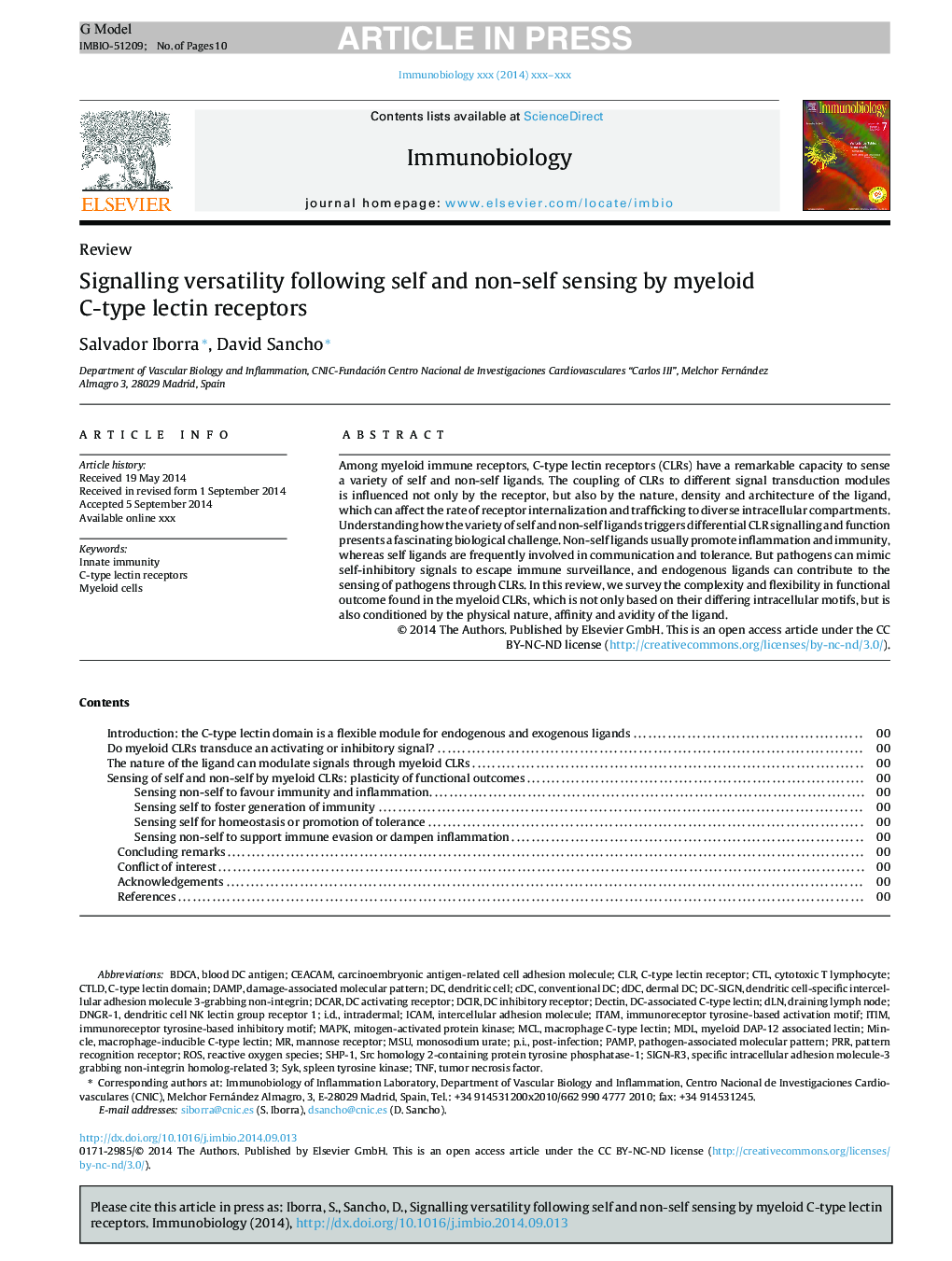| Article ID | Journal | Published Year | Pages | File Type |
|---|---|---|---|---|
| 10940972 | Immunobiology | 2015 | 10 Pages |
Abstract
Among myeloid immune receptors, C-type lectin receptors (CLRs) have a remarkable capacity to sense a variety of self and non-self ligands. The coupling of CLRs to different signal transduction modules is influenced not only by the receptor, but also by the nature, density and architecture of the ligand, which can affect the rate of receptor internalization and trafficking to diverse intracellular compartments. Understanding how the variety of self and non-self ligands triggers differential CLR signalling and function presents a fascinating biological challenge. Non-self ligands usually promote inflammation and immunity, whereas self ligands are frequently involved in communication and tolerance. But pathogens can mimic self-inhibitory signals to escape immune surveillance, and endogenous ligands can contribute to the sensing of pathogens through CLRs. In this review, we survey the complexity and flexibility in functional outcome found in the myeloid CLRs, which is not only based on their differing intracellular motifs, but is also conditioned by the physical nature, affinity and avidity of the ligand.
Keywords
PAMPBDCAp.i.DCIRDC-SIGNDLNMSUSHP-1CTLDICAMCLRITIMPRRintradermalC-type lectin domainCeacamMDLMCLCarcinoembryonic antigen-related cell adhesion moleculeDAMPCDCTNFCTLconventional DCITAMddCMAPKROSdamage-associated molecular patternpathogen-associated molecular patternInnate immunitySykDendritic cellMyeloid cellsi.d.spleen tyrosine kinasetumor necrosis factorcytotoxic T lymphocyteimmunoreceptor tyrosine-based activation motifintercellular adhesion moleculeMonosodium urateImmunoreceptor tyrosine-based inhibitory motifMinclemitogen-activated protein kinasepost-infectionDraining lymph nodeReactive oxygen speciespattern recognition receptorC-type lectin receptorMannose receptorC-type lectin receptors
Related Topics
Life Sciences
Biochemistry, Genetics and Molecular Biology
Cell Biology
Authors
Salvador Iborra, David Sancho,
